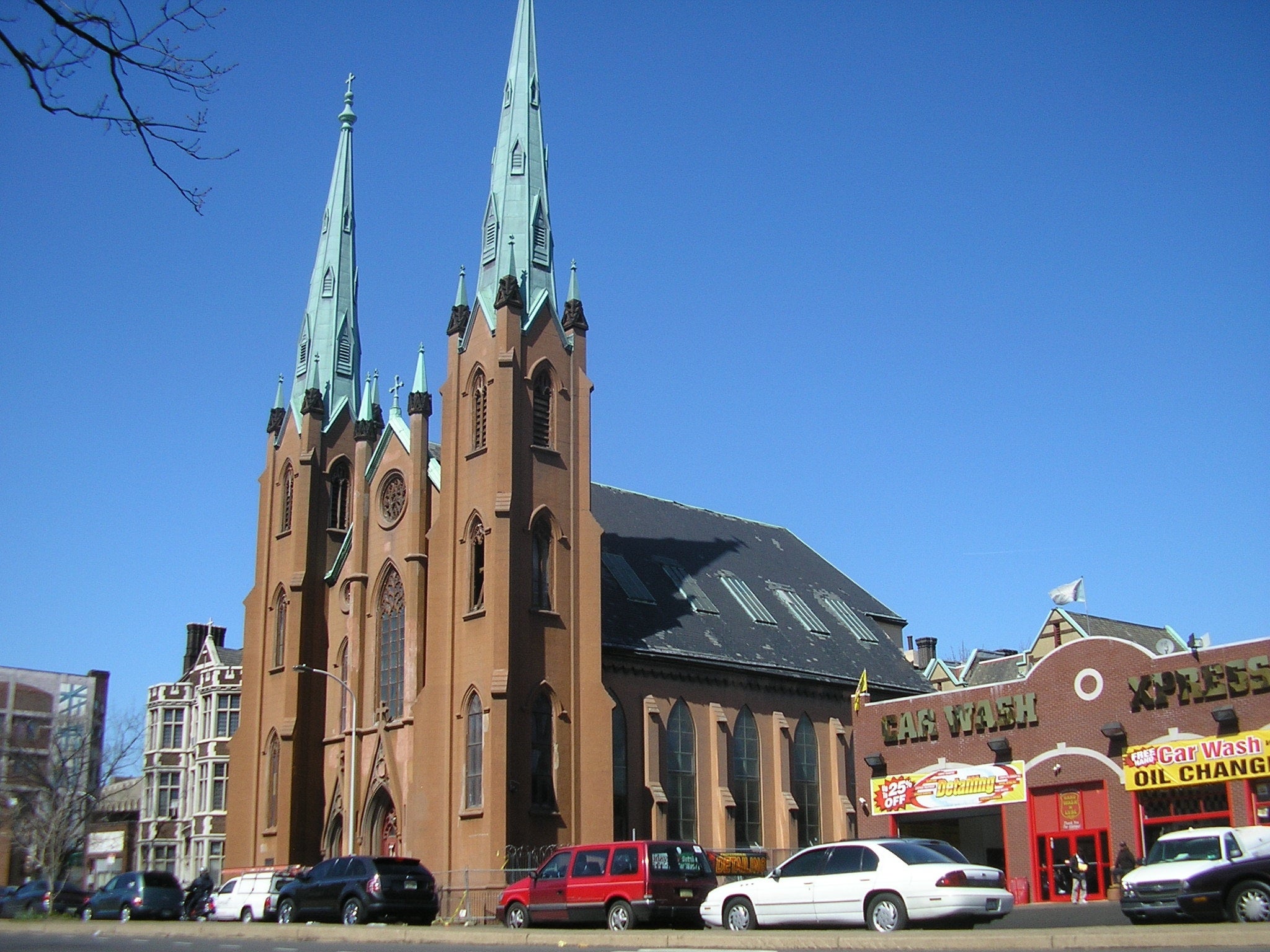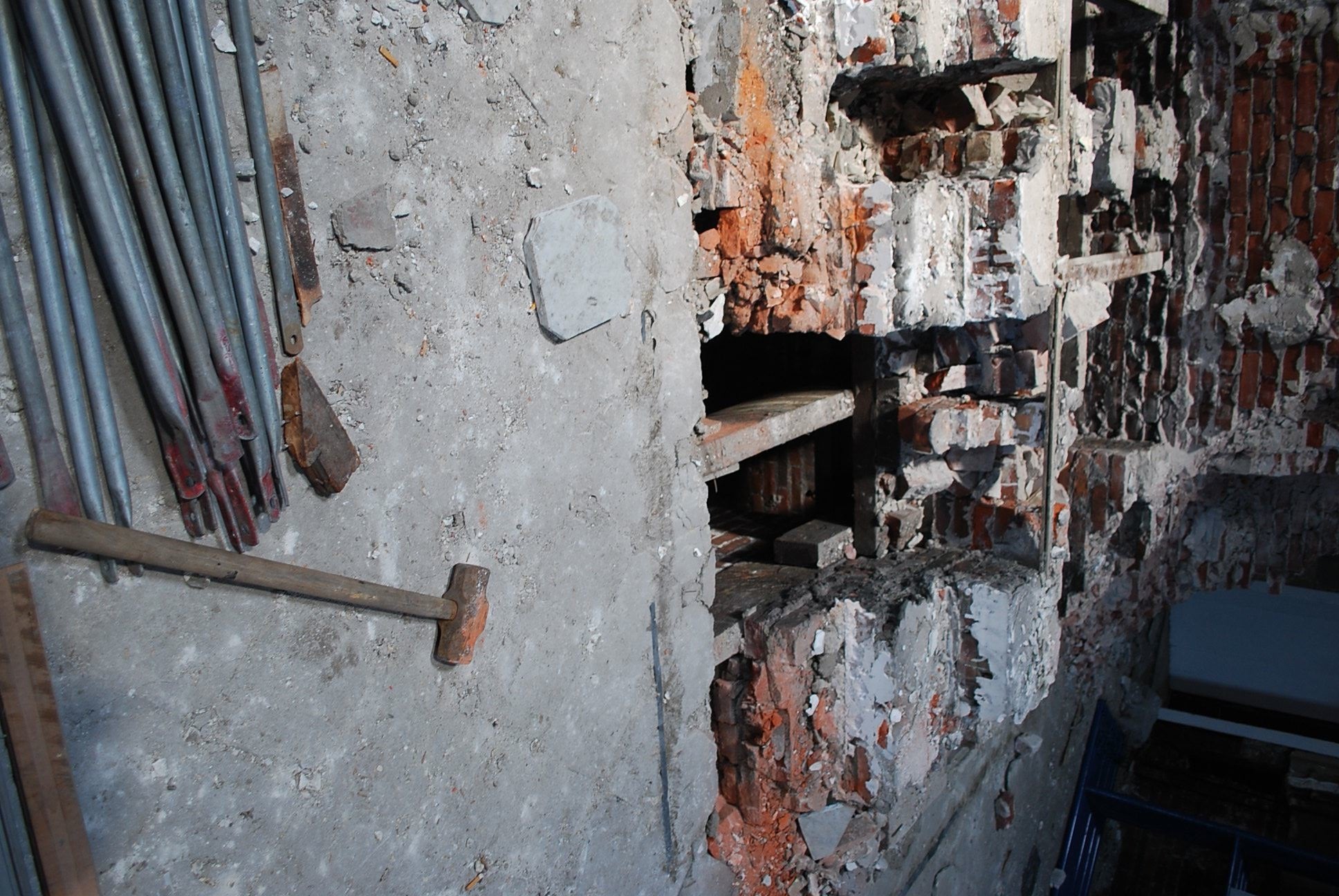Historical Commission approves demolition of 19th-century Church of the Assumption
An almost evenly divided Philadelphia Historical Commission voted Friday to allow the demolition of the historic Church of the Assumption, the 19th-century structure at 1123-33 Spring Garden Street. Five commission members voted to deny and five voted to grant the application by the building’s owner, the social service agency Siloam. Commission Chairman Sam Sherman cast the deciding sixth vote approving the application at the conclusion of the two-and-a-half-hour hearing on the fate of the building.
The commission’s architectural committee had voted Aug. 24 and the financial hardship committee had voted Sept. 8 to recommend that Siloam be allowed to raze the building, which had been vacant since 1995.
The issues at the heart of what has become a wrenching debate over the building surfaced again at the hearing: Siloam’s struggle to maintain its services for clients living with HIV/AIDS, the neighborhood’s love for an architectural landmark, and the building’s tragic decline.
The preservation community made a final appeal to the commission to postpone the demolition for another six months, in the hope that a concerted marketing effort might find a potential buyer and reuse for the church. Proposals to stabilize and “mothball” the building until the real market improved were also considered.
But the owner’s plea for an end to the battle after 18 months of debate and attempts to find a buyer convinced the commission majority to grant its request to demolish the church based on financial hardship.
The church, with its distinctive twin spires, was designed and built in 1848-49 by the most prolific ecclesiastical architect in the U.S. at the time, Patrick Charles Keely. It also has strong historic and religious significance involving two individuals who would become Catholic saints; John Neumann consecrated the church and Katharine Drexel was baptized there.
The attorney for Siloam, Kevin R. Boyle, summarized the recent history of the church and the agency.
The Church of the Assumption has been vacant for more than 15 years, since the Catholic Archdiocese abandoned the building and “stripped it of its religious identity” by removing the stained-glass windows, altar and other interior décor. Siloam bought the church in 2006 and explored possible uses for the property. It asked the Community Design Collaborative in 2007 to assess the cost of restoring the building. The answer: $4 million, which has since been updated to $5 million to $6 million by a cost consultant. In November 2008, the Siloam board of directors decided it could not afford to restore or find a buyer for the building, and it sought a permit for demolition. In March 2009, Siloam received a permit for interior demolition. Then in May 2009, the building was named to the Philadelphia Register of Historic Places, which protected the church from complete demolition.
In January 2010, Siloam engaged the real estate firm Colliers International to market the property. Boyle said 60 inquiries were made about the building, but none resulted in a sale.
Boyle said Siloam has been criticized for buying a property that it could not afford to maintain. “It would not have bought it if it had been designated,” he explained. Siloam “got it because no one else wanted it.”
The agency is losing money because of its ownership of the church, while Siloam’s budget continues to shrink in a difficult economy, Boyle said.
Stabilizing the structure would cost $1.5 million, and Siloam doesn’t have that much money. The estimate of $164,000 the agency has received for demolition of the building is not enough to “even put a band-aid on the building” to stabilize it.
Siloam’s executive director, Joe Lukach, provided more “context” about the agency. Siloam was started in 1995 by a Catholic nun to provide services for those dying of AIDS. The agency moved into the rectory adjacent to the Church of the Assumption in 1997.
In 2006, the Archdiocese told Siloam it must purchase the church if it wanted to remain at the site. “It was all or nothing, buy the church or move,” Lukach said. “We wanted to stay there. The board made the decision to take it,” and renovation discussions began.
When the CDC came back with the $5 million estimate to renovate the church, it was “kind of astonishing to us,” Lukach said. The agency’s budget was only $600,000. Siloam worked with the Partners for Sacred Places and sought fundraising possibilities. “But we didn’t have a congregation. Those we serve didn’t have the money.”
Consultants looked at the possibility of turning the church into condominiums or finding other reuses. “But we were told we would not find a buyer.”
When the economy began changing for the worse, it became “a challenging time just to get grants for our services,” Lukach said. Over the past 18 months, “Siloam has really been struggling,” spending time and resources on the building rather than services for clients, cutting salaries and benefits and not filling vacant positions.
Asked whether Siloam would be willing to continue seeking a buyer for the property for another six months, Lukach said the agency would be willing, “but I don’t know what good it would be.” Boyle called it “an exercise in futility. We are not going to change the economic reality.”
Boyle also said the potential liability of the church building as a danger to the public is “a significant factor.”
Jim Scott, senior vice president at Colliers International, told the commission that in representing both the Catholic and Episcopal Archdiocese in their real estate dealings, it has been “the rare experience” that a church or school has been transformed for some other use. Usually another church or small non-profit has been the recipient of the property. The sites that have been purchased are those with the “least improvement costs,” he said. “In the best of times, it takes two to three years to find a group that is interested” and can get the funding. “Now we’re in the worst of markets.”
Members of the commission asked if there had been any attempt to give the building away in order to get rid of the cost and liability for the church. Boyle responded that as a non-profit, “it would be irresponsible to give it away.” The lot still has value to Siloam, and “they’re out to survive,” he said.
David Schaaf, who represents the Philadelphia Planning Commission on the Historical Commission, raised the possibility of mothballing the church. The Planning Commission sees the neighborhood “moving up on the economic scale” and “Ridge Avenue will be more like Main Street Manayunk in the future,” he said. “Do we really need to destroy a building that has this much profound, engaged history if we thought we could mothball it and have a real prize for the future?”
Boyle said waiting for an economic upswing in five to ten years was not a “viable alternative for Siloam. It can’t wait for five to ten months.”
Andrew Palewski, a contractor who specializes in restoring historic landmarks and the author of the nominating application for the church to the Philadelphia Register, began the public comment period with a Powerpoint that questioned the financial hardship claims of Siloam.
Palewski said the building has not been a financial drain on the agency, and the purchase of the entire site, including the church, rectory, convent and adjacent parking lots required a $214,000 investment by Siloam. Seventy-five percent of the property remained unused space by the agency, he said.
The convent was “ripe for development,” and only one of the three parking lots is used by Siloam staff. The agency currently has more than $1 million in “unneeded real estate,” he said. That it has not rented or sold any of that property “defeats the argument of financial hardship.”
He also said the church has not been properly marketed, noting that the Colliers International official said it takes two to three years to normally sell such a property, and the church has only been on the market since January.
Amy Hooper, president of the Callowhill Neighborhood Association, also testified in opposition to the demolition of the church. “The Historical Commission’s duty is to be forward-thinking and consider all the options” before allowing the demolition of “this monumentally magnificent structure.”
Representing Save Our Sites, architect David S. Traub proposed a “six-month concerted effort to market and sell” the church. “In six months if we’re still here, we will feel we have done the right thing,” he said. “This neighborhood is a resurgent one, and it has a bright future.” The Church of the Assumption is a “historic building that cannot be replaced.”
John Gallery, executive director of the Preservation Alliance for Greater Philadelphia, conceded that the restoration of the church is “a very difficult matter.” The Preservation Alliance, he said, “shares the concern that additional time may be of value to save this property.”
Gallery questioned whether the marketing efforts for the church so far were a “fair test” of its possible sale, and he noted that there have been cases when a church has been sold for non-religious purposes.
He said Siloam had placed obstacles to a possible sale. The asking price of $575,000 may have discouraged potential buyers who might have come forward, and requiring the buyers to have full financing was “very unusual,” he said.
Gallery also said the actions of Siloam led to the current condition of the building, referring to photos shown by Palewski from 2007, when the interior was still intact, and 2009, after the agency had begun extensive salvaging work of the floors and columns.
The commission also heard from representatives of AIDS organizations that supported Siloam’s application and praised its work in the community.
Cathy Maguire, a Sister of Mercy who works with Siloam, acknowledged that everyone at the commission hearing was “trying to choose between two goods” – an agency providing a vital social service and the preservation of a treasured building. But she said extending the effort to save the church “may be devastating for Siloam.”
Following the 6-5 vote, Gallery said the preservation community has the right to appeal the Historical Commission decision to the review board of the Department of Licenses & Inspections. He said the Preservation Alliance has not decided if it will file that appeal.
Contact the writer at ajaffe@playphilly.com.
WHYY is your source for fact-based, in-depth journalism and information. As a nonprofit organization, we rely on financial support from readers like you. Please give today.






